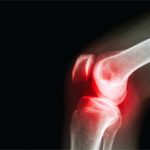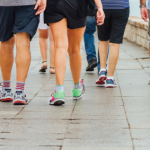 Exercise benefits most people, most of the time. Unfortunately, patients with chronic hip and/or knee pain from osteoarthritis (OA) may be reluctant to exercise. This reluctance could be because they do not understand the cause of their pain and/or are confused by its variability and randomness. Patients’ beliefs about chronic pain can shape their attitudes toward how they manage pain. Thus, patients with OA may be particularly dependent on their healthcare providers to tell them what types of exercise they should and should not do. Absent such expert information and advice, patients may fear they will harm their painful tissue and, therefore, avoid activity.
Exercise benefits most people, most of the time. Unfortunately, patients with chronic hip and/or knee pain from osteoarthritis (OA) may be reluctant to exercise. This reluctance could be because they do not understand the cause of their pain and/or are confused by its variability and randomness. Patients’ beliefs about chronic pain can shape their attitudes toward how they manage pain. Thus, patients with OA may be particularly dependent on their healthcare providers to tell them what types of exercise they should and should not do. Absent such expert information and advice, patients may fear they will harm their painful tissue and, therefore, avoid activity.
The breakdown of bone and cartilage associated with arthritis and the consequent pain and stiffness not only discourages exercise, but also acts as a common cause of physical disability, anxiety, depression, poor quality of life and the feeling that the patient is a burden to loved ones. All of these experiences should respond positively to exercise. A recent Cochrane Library Systematic Review by Michael Hurley, PhD, professor of rehabilitation sciences at the University of London, U.K., and colleagues sought to understand the documented relationship between exercise and pain, movement ability and psychological issues. They found participation in exercise programs may slightly improve physical function, depression and pain in these patients.1
The researchers reviewed the effect of exercise on physical, emotional and mental health in individuals with chronic knee or hip joint pain from OA. They found 21 studies that addressed the topic published before March 2016. The studies included 2,372 men and women aged 45 years or older from Europe, North America, Asia and Australasia. They evaluated exercise performed in clinical settings, the home and/or recreational facilities. The authors focused on studies that evaluated patients with pain and stiffness in the knee, hip or both, and their response to exercise. The studies considered pain, movement or both, as well as psychological and social outcomes. The quality of the evidence was generally moderate.
The systemic review confirmed that individuals who exercised for 45 weeks rated their pain 1.2 points lower on a scale of 0–20 when compared with those who did not exercise—an improvement of 6%. Physical function improved by about 5% over 41 weeks of exercise. Additionally, people’s confidence in what they could do increased by 2% after 35 weeks of exercise. With regard to mental health, people who exercised were 2% less depressed. Overall, the studies indicate that exercise may slightly improve self-efficacy and social function. However, exercise is unlikely to improve anxiety in patients with OA.
The authors conclude by recommending healthcare providers give reassurance and clear advice about the value of exercise in controlling symptoms of OA. Ideally, healthcare providers should also provide patients with opportunities to participate in exercise programs tailored to the patient’s interests with the understanding that patients are more likely to follow through with exercises they enjoy and consider relevant.
Lara C. Pullen, PhD, is a medical writer based in the Chicago area.
Reference
- Hurley M, Dickson K, Hallett R, et al. Exercise interventions and patient beliefs for people with hip, knee or hip and knee osteoarthritis: a mixed methods review. Cochrane Database Syst Rev. 2018 Apr 17;4:CD010842.

